 Tin; rectangle, contained by the diagonals of a quadrilateral inscribed in a circle, is equal to the sum of the rectangles contained by its opposite sides. Tin; rectangle, contained by the diagonals of a quadrilateral inscribed in a circle, is equal to the sum of the rectangles contained by its opposite sides.  Science Examination Papers - Page 248by Great Britain. Education Department. Department of Science and Art - 1899Full view Science Examination Papers - Page 248by Great Britain. Education Department. Department of Science and Art - 1899Full view - About this book
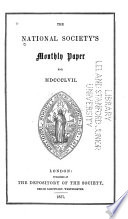 | 1857 - 408 pages
...another. 2. Similar triangles are to one another in the duplicate ratio of their homologous sides. 3. The rectangle contained by the diagonals of a quadrilateral inscribed in a circle is equal to both the rectangles contained by its opposite sides. SECT. II, — 1. Describe a rhombus, of which... | |
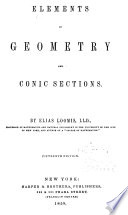 | Elias Loomis - Conic sections - 1858 - 256 pages
...BDxDC (Prop. XXVII.) ; hence BAxAC=BDxDC+AD'. Therefore, if an angle, &c. PROPOSITION XXX. THEOREM. The rectangle contained by the diagonals of a quadrilateral inscribed in a circle, is equivalent to the sum of the rectangles of the opposite sides. Let ABCD be any quadrilateral inscribed... | |
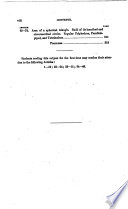 | John Hymers - Logarithms - 1858 - 292 pages
...COB FO cosFG ' cos CH+ cos FH~ cos AO + cos FQ* or 4. The product of the sines of the semi-diagonals of a quadrilateral inscribed in a circle, is equal to the sum of the products of the sines of half the opposite sides. Let the dotted lines (fig. 24) represent the chords... | |
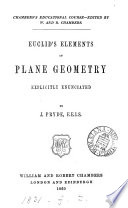 | Euclides - 1860 - 288 pages
...consequently the rectangle BA • AC is equal to the rectangle EA • AD (VI. 16). I'JtorOSITJON D. THEOBEM. The rectangle contained by the diagonals of a quadrilateral inscribed in a circle, is equal to both the rectangles contained by its opposite sides. Given any quadrilateral ABCD inscribed in a circle,... | |
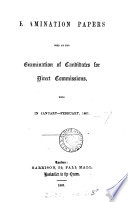 | War office - 1861 - 714 pages
...square of the line which meets it, the line which meets shall touch the circle. VOLUNTARY PORTION. 1. The rectangle contained by the diagonals of a quadrilateral inscribed in a circle is equal to both the rectangles contained by its opposite sides. 2. If two straight lines are at right angles to... | |
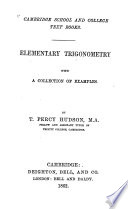 | Thomas Percy Hudson - Trigonometry - 1862 - 202 pages
...(fj+y) = sin a sin 7+ sin /3 sin(a + j3+7), and apply this formula to shew that the rectangle under the diagonals of a quadrilateral inscribed in a circle is equal to the sum of the rectangles under the opposite sides. sin (a +/3) sin (j3 +7) =£{cos (a - 7) - cos (0 + 2/8 + 7)} =... | |
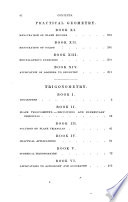 | Benjamin Greenleaf - Geometry - 1861 - 638 pages
...multiplied by twice the diameter of the circumscribed circle. PROPOSITION XXXVIII. — THEOREM. 291. The rectangle contained by the diagonals of a quadrilateral inscribed in a circle is equivalent to the sum of the two rectangles of the opposite sides. Let ABCD be any quadrilateral inscribed... | |
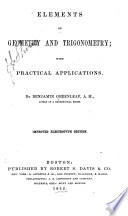 | Benjamin Greenleaf - Geometry - 1862 - 518 pages
...multiplied by twice the diameter of the circumscribed circle. PROPOSITION XXXVIII. — THEOREM. 291. Tlie rectangle contained by the diagonals of a quadrilateral inscribed in a circle is equivalent to the sum of the two rectangles of the opposite sides. Let ABCD be any quadrilatoral inscribed... | |
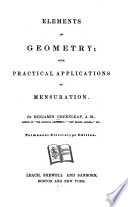 | Benjamin Greenleaf - Geometry - 1863 - 504 pages
...multiplied by twice the diameter of the circumscribed circle. PROPOSITION XXXVIII. — THEOREM. 291. The rectangle contained by the diagonals of a quadrilateral inscribed in a circle is equivalent to the sum of the two rectangles of the opposite sides. Let ABCD be any quadrilateral inscribed... | |
 | James Robert Christie - Mathematics - 1866 - 428 pages
...= (a + x)'(2a — ж). E. • '» L GEOMETRY. 1. In a circle, the angle in a semicircle is <fec. 2. The rectangle contained by the diagonals of a quadrilateral inscribed in a circle is equal to both the rectangles contained by its opposite sides. 3. If, in a circle, an equilateral polygon be... | |
| |